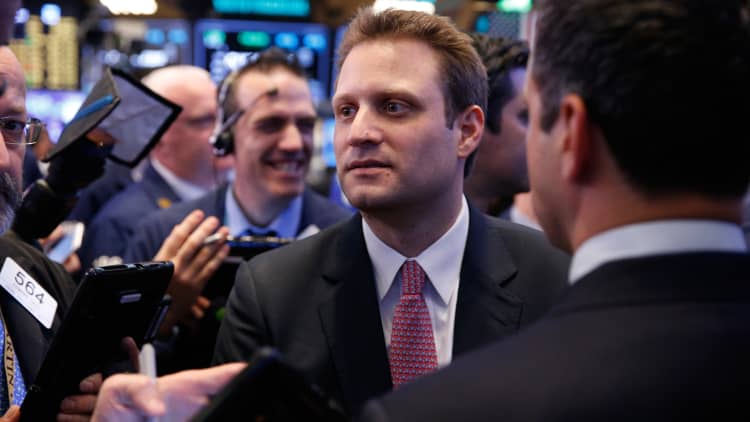
Blue Apron has been a public company for less than two months. Already its stock price has been cut nearly in half, and it faces a slew of shareholder lawsuits and the departure of several executives.
The confluence of these events and the magnitude of their occurrence at Blue Apron is rare. Many of them could have been avoided if shares of the meal delivery upstart had been priced better at the onset.
So what happened? Blue Apron hired two of the best brands in stock underwriting — Goldman Sachs and Morgan Stanley — to figure out the right price. In the end, they were off by a factor of three.
It's not like the challenges at the company were ever a surprise. Amazon announced a deal to acquire Whole Foods on June 16, a combination that threatened to eat into much — or all — of Blue Apron's market share. Investors were concerned about that as well as how much Blue Apron would have to spend to get and retain customers.
But just three days later, on Monday June 19, Blue Apron launched its roadshow anyway with a $15 to $17 IPO price range. That means Blue Apron's executives were meeting with investors all over the country asking them to value the company as high as $3.2 billion.
By this point in the IPO process, it's all about psychology. To salvage a tough deal, the bankers needed to communicate a position of strength, while making sure to provide an honest picture of the investor demand for the new shares so not to upset big institutional investors, who are repeat buyers of IPOs.
That did not happen, according to people familiar with the bankers' so-called book-building process. The message from the bankers to investors as late as two days before the IPO pricing was that they were closing their order books early, the sources said. The way IPOs work, that is a sign of heightened demand.
The bankers noted there was "some" price sensitivity at the low end of the range, the sources said, but that typically means the IPO will be somewhere in the range.
Then, the next day, on June 28, Blue Apron amended its prospectus with a price range between $10 and $11 per share. For investors considering the initial $15 to $17 range, this was a shock. "It left no credibility in the messaging," one person said.
Suddenly, skepticism turned to anger and the loss of interest in the IPO. That forced Blue Apron to price at the low end of its lowered range on June 29, and the shares declined on their first day of trading. The stock traded as low as $5.12 on Aug. 11, a discount of 68 percent from the initial price range put forth.
Blue Apron shares are down 41 percent since the beginning of July, though they rebounded 4 percent on Wednesday, to $5.47.
Its market cap? Just over $1 billion.
Representatives from Blue Apron, Goldman Sachs and Morgan Stanley declined to comment.
WATCH: Blue Apron CEO says we've grown our business 10x in past 2 years



